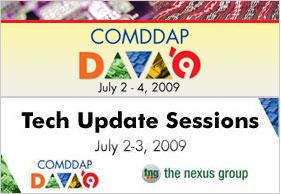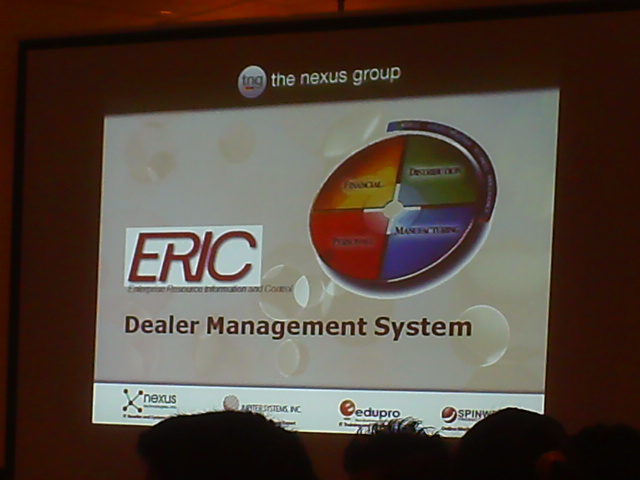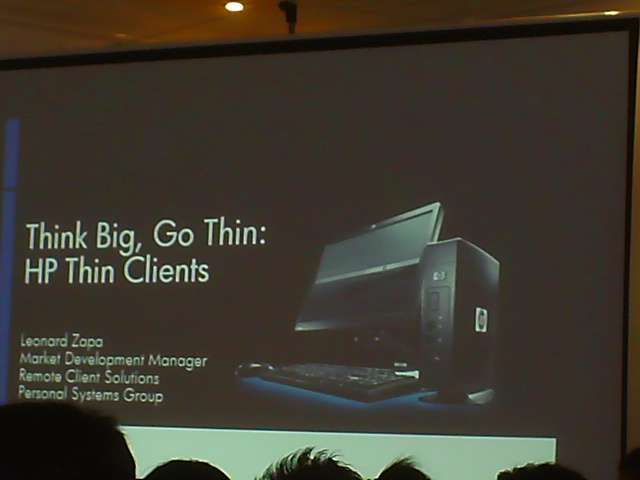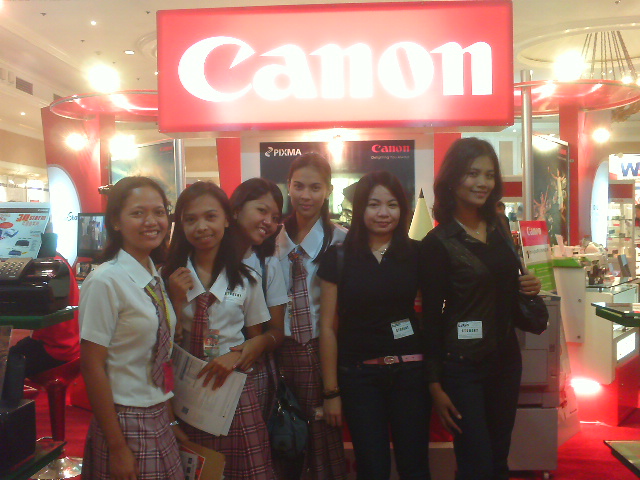
A lot of computer sales and services companies, dealers of communication tools and equipments, distributors of multimedia accessories, computer developers, IT practitioners, digital solution providers, and even those who belong to the business corporate world, students and teachers, young and old, gather together to this annual event called COMDDAP (Computer Manufacturers Distributors and Dealers Association of the Philippines) Davao Expo 2009 held at Apo View Hotel, Davao City on July 2-4, 2009.
The event is open to all especially those who are interested in IT. But because of limited seats, there is a need for a registration. Same as the other year, our professor, Mr. G. invited us to visit the exhibit and attend the seminars scheduled on the first two days. When I and my classmates arrived at the hotel, there are already a lot of people at the Grand Ballroom where the exhibit is being held. Some of the exhibitors who participated in the last time I attended the same event were there (as far as I could remember) but I also noticed few companies whose names sounded unfamiliar to me. There were also a lot of students from other universities.
Well, aside from attending the seminars, my goal is to view the exhibit where I could have a glimpse of the new trends of technologies and its gadgets. Apart from that, I can have the chance to collect those product infos in flyers and glossy papers that I’ve been yearning for in this once-a-year event where almost all of the dealers and distributors of computer h/w and s/w, multimedia, etc meet. I have that strange hobby of collecting souvenirs. Hehe. And of course, the opportunity to join in the raffles and get freebies! Hahaha!
Well guys, let’s get serious here. The Tech Updates Sessions were actually being given by some of the known names in the world of IT developers, namely The Nexus Group, Jupiter Systems, Inc., Edupro Inc., and Spinweb Inc. The sessions were of free registration (over the internet thru the website) but there were only limited seats. I registered for the afternoon sessions on the first day. I could say that most of the audiences were composed from our institution, IT and CS students from University of Southeastern Philippines. (Because we were required to do so. Lol.) The seminar started late so we spent the time roaming around the exhibit area first.

The first speaker talked about the ERIC [Enterprise Resource Information and Control] Dealer Management System (DMS). It is an end-to-end software solution for automotive dealer operation. ERIC DMS' range of solutions covers Customer Relationship Management (CRM), Vehicle Sales and Administration (VSA), and Service Management (SVM). It is also supported by a robust back-end system on parts and supplies inventory, over the counter sales, purchasing and the requisite financial modules for financial accounting and reporting.
In general, the presentation is very good, especially when the speaker explained the parts of the s/w program they developed. As an IT student (and a programming student), I could say it was so complex and may have spent a long time debugging for the program’s successful implementation.

The next presentor is someone from Nexus Technologies Inc. who talked about the HP Thin Client. He even had an actual computing device in front of us for his demo. Before he began, he said they will be giving freebies (i.e. USB Flash Disks, T-shirts) for those who could answer his questions after the presentation, and that suddenly filled the room with enthusiasm. Haha! And so, expectedly, the students listened eagerly to the discussion and we even took down notes. Thin clients sounded familiar to me at first but I only knew its real meaning and function this time. A thin client is a computing device without a hard drive, which displays data and applications from remotely located servers, blade PCs, and virtual desktops. As the speaker discussed about the features of the HP Thin Client, we couldn’t help but be overwhelmed of its capabilities as a device. The thin client is primarily designed for task-based users, or those who only had 1 or 2 applications running on their machines, such as ticketing offices, internet kiosks, and the like. It is also to address the concern of IT professionals who are faced with challenges in providing information security (i.e. loss of data due to hardware/software failures, virus and malicious attacks, theft and natural disasters), deployment and maintenance, and total cost of ownership (TLO). Some of its benefits are its proactive capability (if there are any changes due to malwares, etc, you just simply have to reboot it and its fine!), self-healing, and lock-enabled. Plus, it is has hardened embedded OS (no need for antivirus; intelligent & secure USB), has failure rate which is ¼ of that in desktops, 80% less power consumption, longer life, 75% reduced foam, surface-mounted thus space-saving, and overall, more reliable. I have also known a technique in computing and comparing hardware cost – a basis whether you want to buy a desktop or choose the thin client – that is, annual hardware cost divided by the number of usage in years (before changing h/w). Truly, who could not be convinced with these nice advantages! The last part of the presentation was of course, the Q&A portion. The speakers even found it hard to choose the ones who will answer their multiple-choice questions because everybody raised their hands to answer. Unfortunately, I was not meant to get a freebie. Hmmp.
I was not able to hear the third presentation which was the Retail Management System Overview by the Nexus Professional Services and Solutions (NPSS) because we thought the session was ‘by invitation’ only so we went out to the exhibit area. (Only then I found out that some of us did attend the third one. However, I was able to catch up a part of the last session which was Open Source for Business Applications by Spinweb Productions Inc. I heard the speaker discussed and showed some websites made by open source software and applications. A gentleman from our side raised his hand and challenged the speaker on what’s his stand towards whether to use proprietary softwares or open-source developed applications in mission-critical purposes like the 2010 Automated Elections. Suddenly, it made me remember my assignment which is related with the Automated Elections. The gentleman shared his insights about his query. What he was discussing about made me realize how responsible an IT professional is, in terms of developing digital solutions to the customers, system users, and even the government. I was impressed by how he delivered his opinion regarding the matter. Even though he was not one of the lecturers, he conveyed his message to the audience, and that gave us, young students who may be future software developers someday, a very important lesson. [more about reflection on 2010 automated elections on my post on assignment 3 thread…]


No comments:
Post a Comment